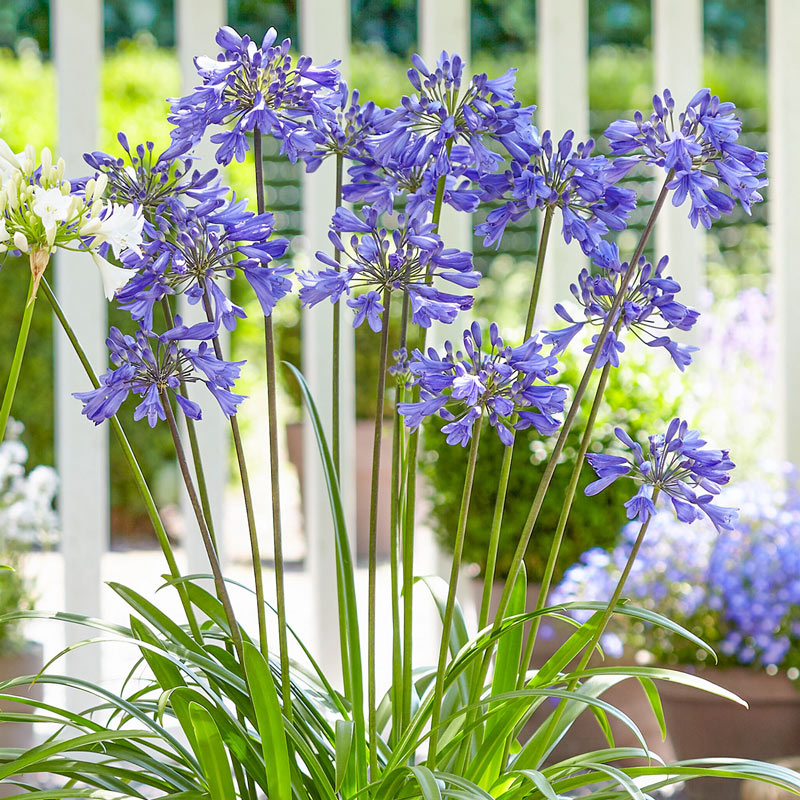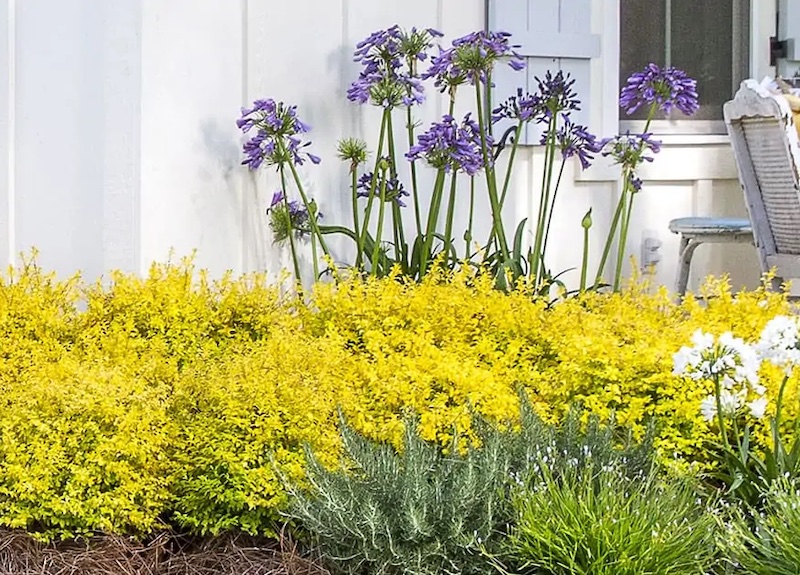Agapanthus Expanding Problems: Dirt, Sunlight, and Watering
Agapanthus Expanding Problems: Dirt, Sunlight, and Watering
Blog Article
Releasing the Secret to Effective Agapanthus Farming: Tips and Tricks for a Flourishing Yard
In the realm of gardening, growing agapanthus successfully calls for a critical method that encompasses numerous facets of plant care. By comprehending the subtleties of agapanthus growing, one can create an environment where these plants grow and grow generously.
Planting Agapanthus: Best Practices
When growing Agapanthus, correct soil preparation is crucial for making certain successful development and development of these stunning blossoms. Agapanthus, commonly referred to as Lily of the Nile or African lily, prospers in well-draining soil with a somewhat acidic to neutral pH degree - Agapanthus. Prior to growing, it is critical to modify hefty clay dirts with organic issue such as garden compost or peat moss to enhance water drainage and provide vital nutrients for the plants
To plant Agapanthus, choose a location that obtains complete sunlight to partial color, as this will certainly promote healthy and balanced growth and bountiful flowering. Dig an opening twice the diameter of the plant's root ball and position the Agapanthus at the exact same deepness it was formerly expanding. Gently backfill the opening with dirt, pushing down strongly to remove any kind of air pockets around the origins.
Water the recently grown Agapanthus completely and remain to keep the soil evenly damp, particularly during the plant's active growing season. Agapanthus. Applying a balanced fertilizer once a month can better sustain the plant's growth and blooming. By adhering to these best practices for growing Agapanthus, you can produce a sensational display screen of these exciting flowers in your yard
Ideal Dirt Issues for Agapanthus
For optimal development and blooming success of Agapanthus plants, ensuring the dirt conditions are optimal is crucial. Agapanthus prospers in well-draining dirt with a slightly acidic to neutral pH level varying from 6.0 to 7.0. This sort of dirt permits adequate water drainage, avoiding waterlogging which can bring about root rot. To boost soil water drainage, take into consideration adding raw material such as compost or peat moss when preparing the planting site. In addition, Agapanthus chooses dirt that is rich in nutrients, so integrating a well balanced plant food throughout the expanding period can promote healthy growth and dynamic blossoms.

Watering and Fertilizing Tips
To ensure healthy development and vibrant flowers, proper watering and fertilizing methods are vital for effective Agapanthus growing. Agapanthus plants gain from routine watering, especially throughout the expanding season. It is suggested to water deeply once a week, making sure the soil is damp but not saturated. Throughout hot weather condition or in pots, even more frequent watering may be necessary to protect against the dirt from drying out totally.
When it involves feeding Agapanthus, a balanced plant food with equivalent parts nitrogen, phosphorus, and potassium can website here be applied in the spring to advertise healthy development and flowering. Slow-release fertilizers are optimal for offering nutrients gradually over an extensive period. Avoid over-fertilizing, as this can lead to extreme foliage growth at the cost of blooms.
Additionally, including organic matter like garden compost right into the dirt can boost nutrient degrees and enhance dirt framework, assisting in the total health and wellness of the Agapanthus plants. By adhering to these watering and fertilizing suggestions, gardeners can ensure their Agapanthus plants thrive and generate stunning screens of blossoms.
Pruning and Deadheading Techniques
Appropriate pruning and deadheading techniques play an important function in keeping the wellness and visual appeals of Agapanthus plants, matching the essential methods of watering and fertilizing for successful farming. Trimming Agapanthus includes eliminating spent blossom heads, yellowing or dead leaves, and overall shaping of the plant to advertise far better development. Deadheading, the procedure of removing discolored flowers, not only improves the plant's appearance however additionally urges further flowering.
When deadheading Agapanthus, it is suggested to trim off the flower stem at the base utilizing sharp, tidy shears. This process reroutes the plant's power from seed production back right into root and foliage development, advertising a much healthier and much more durable plant. Routine deadheading can extend the growing duration of Agapanthus and prevent self-seeding, which can lead to overcrowding.
In terms of trimming, Agapanthus generally benefits from a light trim after blooming to clean up the plant and motivate fresh development. Cutting back the spent blossom stems and removing any kind of dead or damaged foliage assists preserve the plant's vitality and overall appearance. Nevertheless, it is necessary to prevent reducing into the crown of the plant, as this can damage its wellness.

Protecting Agapanthus From Pests and Diseases
Applying effective pest and condition management approaches is important to safeguarding the health and wellness and vigor of Agapanthus plants in cultivation. One usual pest that impacts Agapanthus is the Agapanthus borer, a caterpillar that tunnels right into the plant, triggering damage to the leaves and flowers.
In a knockout post addition to parasites, Agapanthus are susceptible to illness such as root rot and fungal leaf places. These concerns can often be protected against by making certain correct drain and staying clear of overwatering. If signs of disease show up, influenced parts of the plant should be without delay eliminated to stop further spread. Fungicides may additionally be utilized as a therapy measure, adhering to the maker's guidelines very carefully. By remaining watchful and dealing with bug and illness concerns immediately, garden enthusiasts can aid their Agapanthus grow and prosper.

Conclusion
Finally, effective cultivation of agapanthus needs proper growing methods, suitable dirt conditions, moved here appropriate watering and fertilizing, regular trimming and deadheading, and defense from illness and bugs. By complying with these pointers and tricks, garden enthusiasts can make sure a growing garden loaded with attractive agapanthus blooms. Agapanthus. Remember to preserve consistent care and attention to detail to promote the health and longevity of these magnificent plants
When growing Agapanthus, proper soil prep work is vital for making certain effective development and development of these attractive flowers.Water the recently planted Agapanthus thoroughly and continue to keep the soil evenly damp, specifically throughout the plant's energetic growing season.For ideal growth and growing success of Agapanthus plants, guaranteeing the soil problems are perfect is crucial. When planting or hair transplanting Agapanthus, guarantee the dirt is well-prepared to offer the necessary structure for the plants to develop themselves effectively. One usual insect that impacts Agapanthus is the Agapanthus borer, a caterpillar that tunnels right into the plant, triggering damages to the flowers and fallen leaves.
Report this page